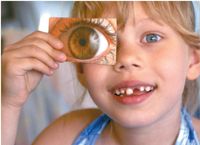Article
Patient history, neuroimaging key to optic neutritis diagnosis
Optic neuritis is an acute, inflammatory, sporadic optic neuropathy unrelated to trauma, toxins, or a nutritional deficiency.

Across the differential diagnostic list of considerations, the clinical findings are often very similar from one type of optic neuropathy to another, Dr. Rizzo said.
"For instance, when a patient develops an optic neuropathy secondary to either optic neuritis or a tumor, the clinical features may be identical," he said. "In either case, there may be decreased central acuity, decreased color vision, and an afferent pupillary defect. The fundus may appear normal or perhaps reveal a swollen nerve or optic nerve atrophy. As such, the clinical exam itself may not be the most helpful element of the encounter with the patient."
"Trauma may be a confounding issue in the sense that when a physician examines a patient who reports recent head trauma, which is common in young children, it can be easy to accept trauma as the cause for the optic neuropathy and therefore miss the true case of the blindness," he continued. "Alternatively, the physician may be thinking of one of the conditions in the differential diagnostic list and miss the fact that a patient had had trauma years before that had not been recognized to cause visual loss. In other words, when the doctor examines the patient for the first time, the optic neuropathy may have been present for a long period, yet the patients, especially those who are very young, may not report the history of trauma." Falling off of a bicycle and not having the protection of a helmet is the leading cause of traumatic optic neuropathy in children.
Neuroretinitis may be difficult to distinguish from idiopathic optic neuritis because the telltale "macular star" may not develop for a week or two after the onset of visual loss and swelling of the optic nerve, Dr. Rizzo said.
The implications of neuroretinitis, however, are very different from those of idiopathic optic neuritis, he added. Patients with neuroretinitis do not have the risk of developing multiple sclerosis (MS) as do many patients who have experienced idiopathic, demyelinative optic neuritis.
The presence of a tumor that is compressing the optic nerve is often revealed by the history of progressive visual loss (lasting more than 2 weeks) or progressive change in visual behavior, Dr. Rizzo said.
"Any history of progressive visual loss always raises concern about a compressive optic neuropathy," he pointed out.
These tumors may also be associated with proptosis or other physical findings that facilitate the discovery of the tumor. Pain is extremely common in patients with idiopathic optic neuritis but may also be present in some patients with other types of inflammatory optic neuropathy or tumors, he noted.
Need for neuroimaging Neuroimaging is extremely important in patients who have an acute optic neuropathy and could reveal a tumor that might not have been detected through the history or other components of the clinical examination. Imaging can also show enhancement of the optic nerve, which typically indicates an inflammatory condition. However, clinicians need to be cautious when reviewing axial images for signs of optic nerve enhancement, Dr. Rizzo said.
"One can be fooled because of the increased signal of the fat in the orbit," he noted. "It is always better, when one is looking for enhancement, to examine coronal sections of the orbit."
Newsletter
Don’t miss out—get Ophthalmology Times updates on the latest clinical advancements and expert interviews, straight to your inbox.





